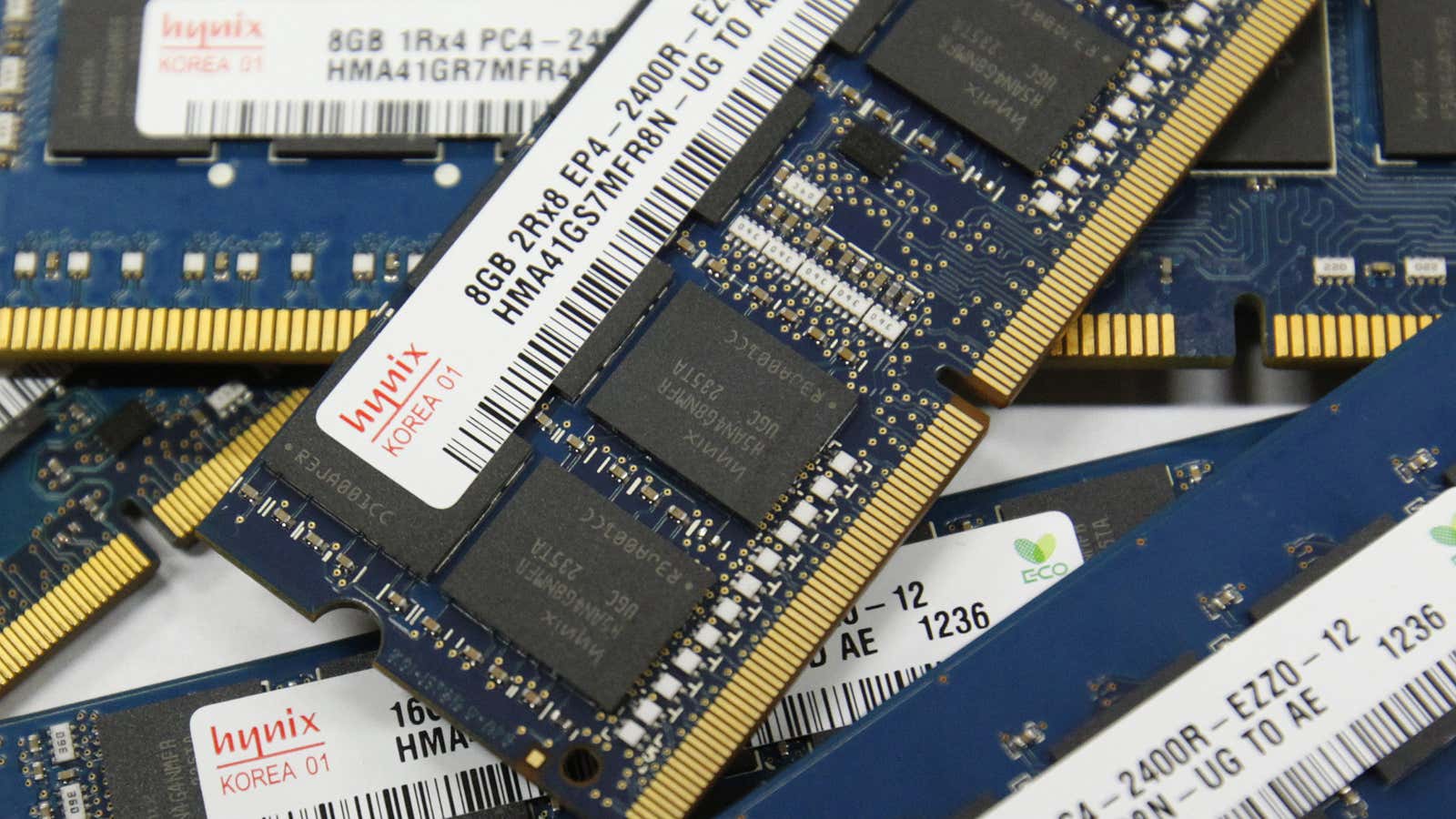This item has been corrected.
It was an industrial mishap barely noticed outside the arcane world of electronics supply chains. On Sept. 4, a fire engulfed a substantial portion of an SK Hynix production plant in Wuxi, China. The plant produced between a tenth and a sixth of the world’s supply of dynamic random access memory (DRAM), a sort of memory chip used in all computing electronics from laptop computers to mobile phones. Hynix is the world’s second-largest maker of the stuff, supplying everybody from Apple and Dell to Lenovo and Sony.
So how bad was the disruption? The effects of the fire were instant: the spot price of a benchmark unit of 2-gigabit DRAM jumped some 20% to $1.90 the following day, a three-year high. Prices show no sign of retreating. According to Trendforce, a research firm, the shipment of some 10 million smartphones and 11 million laptops could be affected within a month. With Windows 8.1 on the way, PC makers are worried they may not have enough juice for their machines. HP took the threat of supply-chain disruption seriously enough for senior management to clear their calendars for two days ”and all we did was make sure that we have an unfair share of the available [DRAM] commodity.”
That may benefit Samsung, which makes half the world’s supply of memory. The South Korean company decided to focus its memory-making efforts on mobile DRAM rather than the sort used in PCs. With an opening in the market and prices rising, Samsung is likely to change tack, Digitimes reports. But added supply from Samsung may not be enough to ease the pain. Industry watchers think that a supply squeeze will inevitably raise prices still further.
Also suffering are makers of cheap Chinese phones, especially the many smaller outfits that litter China’s Industrial parks. Unlike large tech companies, which can place large orders and hedge against future price rises, smaller manufacturers tend not to lock themselves into long-term contracts. That means they have less room to maneuver when prices suddenly rise. Moreover, they are among the main customers of mobile memory produced in Hynix’s China plant.
Estimates vary for when Hynix will be able to return its plant to full production, running from one month to six months. The truth is probably closer to what an analyst from Sanford C. Bernstein told the Wall Street Journal: “We still don’t know the extent of the damage or how long it will take for full operations to resume.”
Correction (Sept. 15, 2013): An earlier version of this article incorrectly referred to the benchmark DRAM chips as 2-gigabyte when they are in fact 2-gigabit. Apologies.
